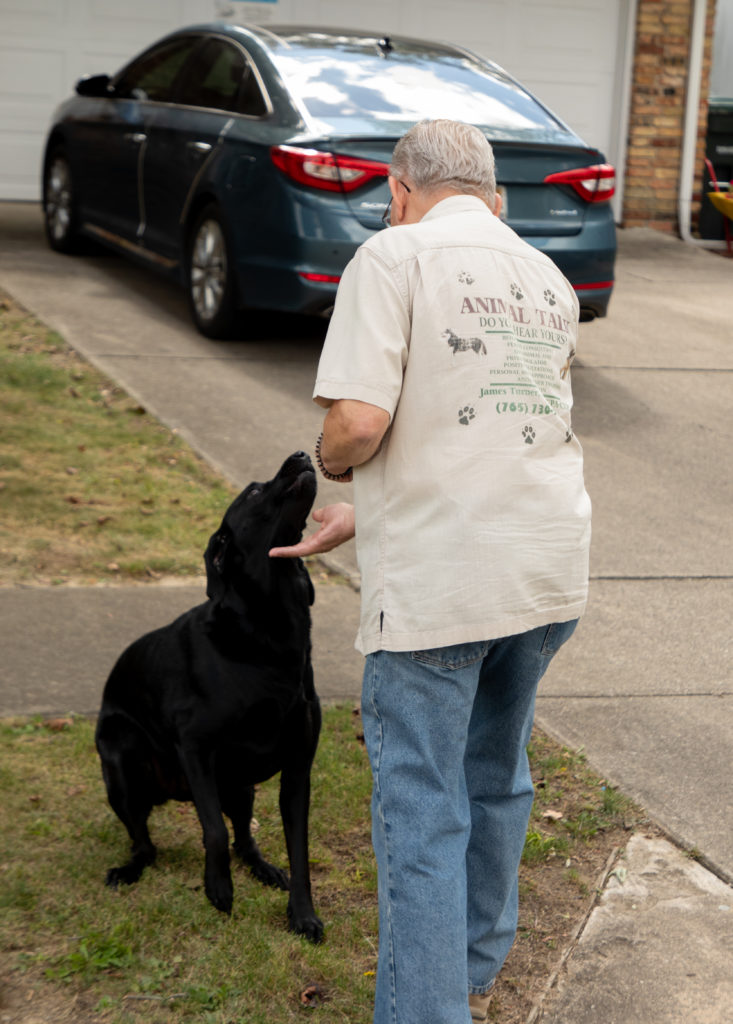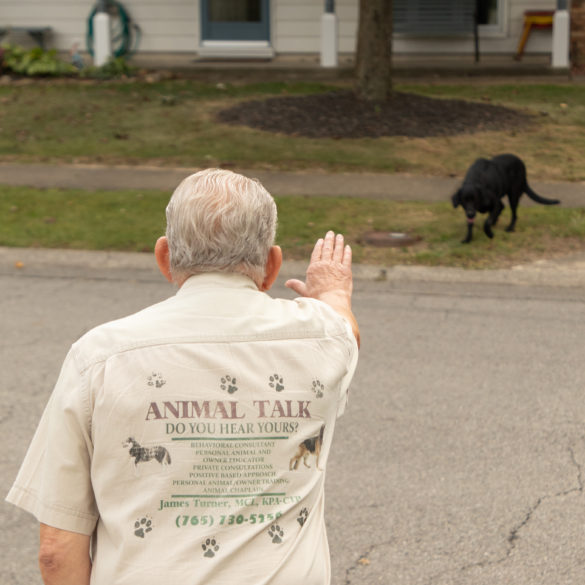James Turner’s wife, Linda, lost most of her hearing due to nerve damage when she was a child. Linda’s hearing became much worse when she was about 35 years old, James says, but they were able to find a device from RadioShack called The Listenator to help her hear better.
In 2005, James and his wife adopted Nekayah, a Louisiana Catahoula Shepherd. James says when Nekayah was about a year old, he called a service animal trainer in Indianapolis who taught James how to train Nekayah to become a service dog for his wife.

“She was extremely gentle and well-behaved. I also had her trained as a therapy dog and I used to take her to nursing homes to work with patients,” says James, a certified animal behaviorist.
After 13 months, Nekayah became an official service animal through clicker training. Clicker, or marker, training uses the “click,” a small mechanical noisemaker, to mark the behavior that the trainer is wanting from the dog. James said service dogs are always learning and he and his wife trusted Nekayah “impeccably.”
“The increased bond and trust instilled in her a desire to learn and serve more. We literally became her job,” James says.
Now, James works privately as a consultant to train aggressive dogs and service animals. He has done this for 12 years. He received his master’s degree in animal behavior at Purdue University in 2009, but previously worked for 20 years as a private psychologist specializing in marriage and family therapy.
“[Studying] animal behavior fits very well — there’s not a whole lot of difference from psychology,” James says.
James says there are two types of techniques to train dogs: clicker and traditional training. He says that clicker training is more effective compared to a person using their voice and saying, “Good boy,” because the click is instantaneous.
“What reinforces the click is the treat that follows,” James says. “That may be a food treat or it may be verbal praise. We have to figure out what it is the dog works for best.”
While marker training is more scientific, traditional training can be described as “punishment avoidance” as the dog learns what not to do through wearing choke chains, prawn, and even shock collars, says James. He says traditional training takes longer and is less predictable because the animal often becomes fearful, as it knows that punishment is attached to the item they’re wearing.

“The dog is not as relaxed; it’s not a happy dog. If I punish the dog while I’m training, it shuts down the animal and essentially they stop learning,” James says. “Dogs are very simple. They put everything in one of two baskets: safe or unsafe. And they react accordingly.”
James recalls a time where he and Nekayah helped a young boy with autism who was having a meltdown in Walmart. Because Nekayah was also a therapy dog, James says he asked the mother for permission to help before he let Nekayah calm the boy down.

“I took her over and laid her down beside him,” James says. “All of a sudden his hand hit her and it was like his brain was interrupted with, ‘What was that?’ When he looked at her, Nekayah immediately started licking his face, and he started laughing and he and Nekayah laid on the floor for probably three minutes and just interacted with each other.”
Trainers teach dogs to associate the smell or sound with the treat that follows. David Thatcher, a volunteer wildlife behaviorist at Providence Wildlife Rehab in Indianapolis, teaches dogs to detect human remains. Thatcher says dogs know something good will happen after detecting the remains, and the same goes for sound.
“My Australian Shepherd, Huckleberry, knows whenever the neighbor across the street comes to get his mail. He has associated the sound of the opening of the mailbox,” Thatcher says, “He’ll come to me, bark once and wait for food to come.”
With sound being a form of communication between species, Thatcher says a dog’s growl is a way for it to tell another dog that it is uncomfortable with the situation.
“A lot of people see the growl as a behavior and morality problem, [but] the growl is good communication skills letting them know that I’m not biting yet, but we do have a problem that we need to work out,” Thatcher says.
Thatcher says Huckleberry and his German Wirehaired Pointer, Berdie, communicate with him every day, especially when it’s time to go to the bathroom.
“When they want to go outside to use the restroom, they come in, sit by me and bark four times then run towards the door,” Thatcher says. “When you get into the logistics of sounds, smells and the behaviors associated with dogs, it’s a lot of fun watching them learn and build the bonds between the human and their learners.”




